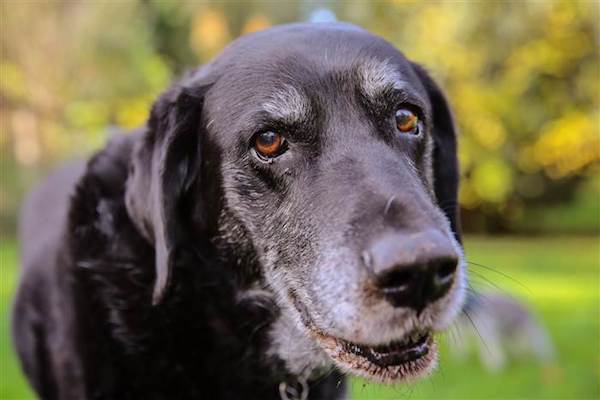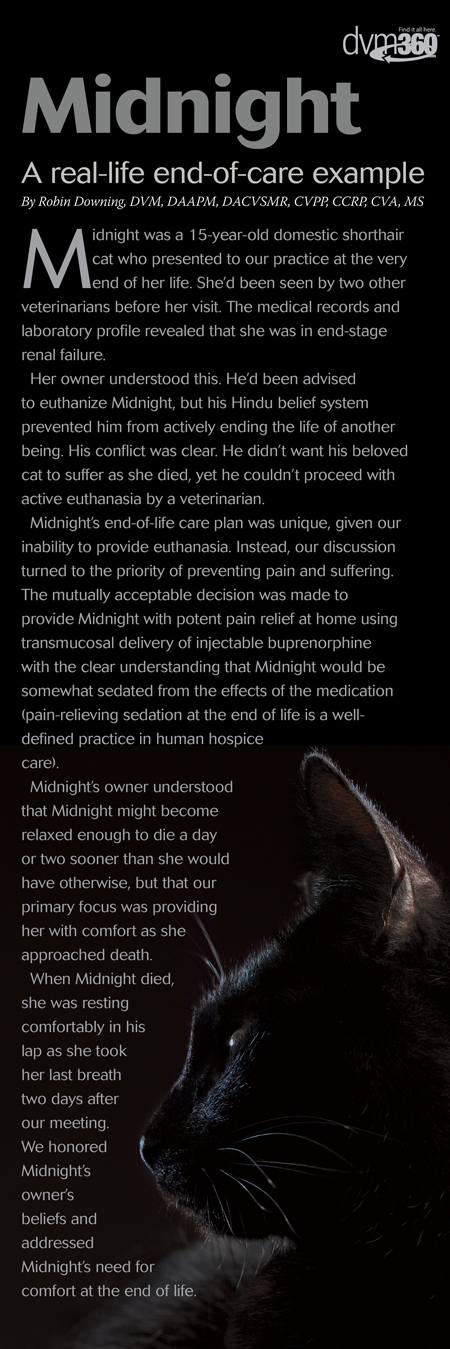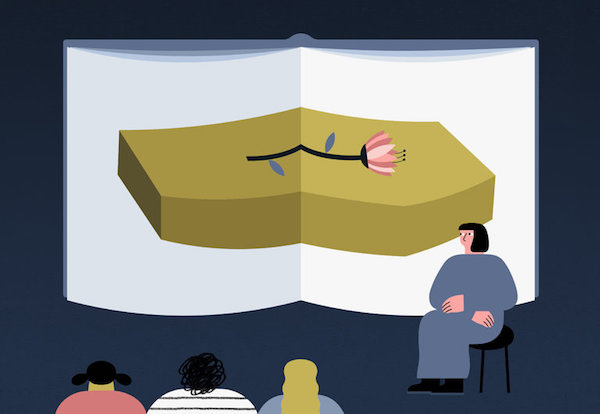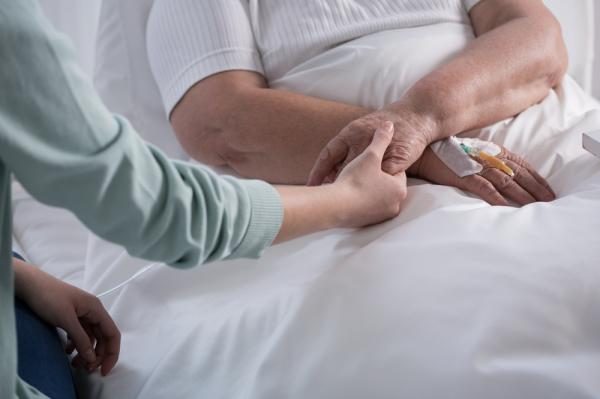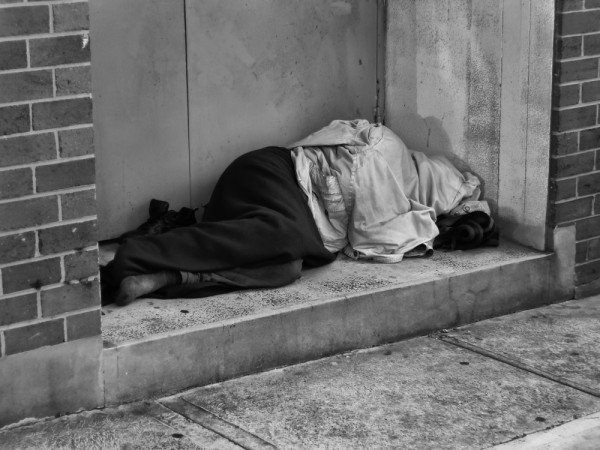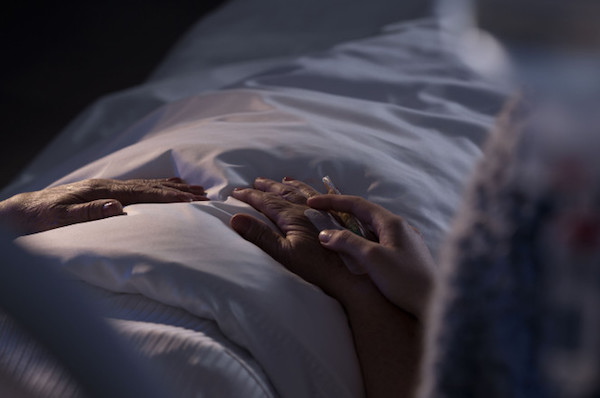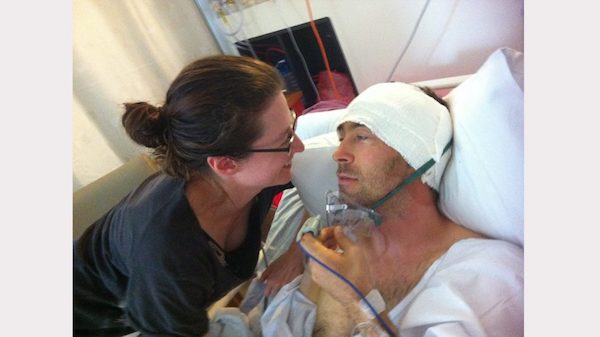
Who is the best person to care for someone who has died? Sometimes, a person who loved them when they were living. Dr Fiona Reid shares her experience caring for her husband Morgan throughout his illness and in the days after his death.
My husband Morgan was a kind, active and talented man. I felt tremendously lucky when I met him and continued to do so throughout our years together.
Morgan was remarkably fit, working as a stuntman internationally. He trained every day and could perform feats of acrobatics and skill. So it came as a shock when he called me at work one day to tell me he was having difficulty spelling. My heart fluttered and my stomach turned over. I felt an intense sense of dread but tried to convince myself that I was overreacting.
I told him to stay at home and that I would be there shortly. I drove home and held Morgan in my arms. We both knew something was very wrong. Despite this, I was totally unprepared for what happened next; for the utter horror of watching his scan and seeing the large tumour in his brain. My legs wobbled. I wasn’t supposed to be in the CT room because today I was a patient’s wife and not a doctor, but no-one thought to stop me. I still think that was one of the worst moments – the moment the world ended.
“Are there any gremlins in my brain?” he asked. “Yes darling, there is a gremlin”.
Like most people, we had a lot of hope. Morgan was young, he was strong, I was a doctor. Surely the 14-month prognosis was not for him.
He endured two operations on his brain, chemotherapy, radiation therapy, three experimental treatments and more chemotherapy before finally in January 2016 we decided to stop most treatments and concentrate on what little time we had left.
By this time my gorgeous husband was struggling. He had lost half his vision, he couldn’t use the right side of his body, his face was swollen from steroids and he was very tired. It never occurred to me that I wouldn’t look after him. I began to prepare for caring for him at home.
I was lucky to have some knowledge of what caring for someone who is dying might entail, but whatever I knew as a doctor was a fraction of the real experience. I prepared though. I read blogs written by other women who had cared for their husbands through brain cancer. I researched the timeline, what might happen, how his death might be, what symptoms may occur. I tried to predict.
I learned that we continue to hope, even when things are deteriorating. So even if we only get a “good hour” we hope for another later or tomorrow. We learn to reduce our expectations, such that a smile or a squeeze of the hand seems like a victory and the promise of recovery. Therefore in order to prepare, you must force yourself to remember what happened yesterday and last week. When there are more bad days or bad hours than good ones, you know it’s time to make arrangements.
The hardest thing was doing this whilst still trying to keep up Morgan’s spirits (not that he needed much help; he was extremely positive right until the end). I tried to be open with him, but he looked a little hurt when I had the hospital bed delivered. I felt I had let him down a little, but he was struggling to sit up and I was finding it difficult to lift him.
The bed came just in time. A few days later he was unconscious and although he woke up, he never spoke or left his bed again until after his death three weeks later.
You need equipment if you are to care for someone at home. I needed a bed, a wheelchair, a commode, a bath board and later continence aids, pads, eucalyptus oil, face-washers, medications, liquid thickeners and bed shampoo caps. Most things were rented. I bought consumables from disability companies and the palliative care nurses provided some.
Mostly I needed strength, love and support from family and friends – they believed I could do it and the thought of giving him up to someone else’s care frightened me more than caring for him myself.
I decided early that as much as I loved Morgan he didn’t belong to me, and he deserved to be surrounded by love as often as possible. So I declared an open house. I told everyone that they were welcome to visit at any time and without notice, but I also warned them that I would not be providing food or drink and that if the house was full or it was a bad time they may be asked politely to leave.
I also asked for two hours each day to be alone with Morgan. I put on nice music, burned a candle, bathed him, cuddled him and had some quiet time with him. This was precious time for me. Usually, he would smile at me, then fall asleep as I washed him. I put eucalyptus oil in hot water to freshen the air and massaged lavender oil into his temples to soothe him.
It was during this three weeks that I began to think about “after”. His death had now become a real inevitability; he had stopped talking, eating and swallowing, and he slept more often than not. It felt awfully disloyal to start planning his funeral before his death but I was desperate to do something that honoured him and I knew that every funeral I had been to so far would fall short of his expectations. I had little to go on. He did not want to talk about it. He did not want to be cremated, he wanted to be buried somewhere “with trees” – not a manicured cemetery, and without religion.
I knew I wanted to care for him until the last minute – I never wanted to let him go – but I had no idea what was possible. My experience of death so far had been as a doctor working in a hospital and try as we might it is a cold environment, people are rushed through the death of a loved one and bodies are moved quickly to morgues.
I stumbled on home death care. I was looking at local funeral directors and I felt empty – they all seemed so cold, so scripted, the coffin so pointless. I had no idea what to do. By chance, I found a wicker coffin on an Australian site and I thought it looked beautiful, natural, easily degradable and strangely, comfortable. I looked for the local retailer and found Natural Grace holistic funeral directors. It was as if Natural Grace was made for us.
I watched an interview with managing director Libby Moloney and instantly felt that she was special. Libby specialised in home death care and I knew I wanted to keep Morgan’s body at home. She knew a natural burial site which was 10 minutes away from where we were married. It seemed perfect.
I called Libby, speaking softly and feeling awful guilt as I sat in the same room as my sleeping and alive husband. She was incredibly compassionate. She seemed to understand my hesitation and confusion. She was supportive and never pushed.
I crawled into bed with Morgan on the night of Easter Sunday. I knew this was it. I put my arms around him and a few hours later he took a final breath. It broke my heart.
Libby told me that when he died I should feel free to spend some time with him before calling her. I cuddled him and cried. I called his family and they came we spent a few hours together until 4 am, toasting him with single malt whisky and sobbing together. I called Libby and the palliative care nurses in the morning but asked everyone to leave me alone with him until noon. I wanted to wash and dress him and I wanted to do this alone.
Libby came to the house. It was the first time we had met and she was wonderful. The first thing she said was how beautiful Morgan was and then she asked if she could touch him. I was so grateful for that.
She showed me how to set up the cooling blanket then she talked me through what to expect and watch for. She was honest and very frank which I appreciated. We talked about fluids and smell and flies and all those horrible things that could potentially occur but didn’t. Then she suggested I take some locks of his hair.
She offered to do all these things for or with me but was sensitive to the fact I wanted to do it myself. I knew I had made the right decision; had an undertaker come to take Morgan away from me at that moment I think I would have screamed. The pain of his loss was unbearable and I needed a little more time.
I decided that the first day would be for family only, the following for friends and family. I made and received various calls. I warned everyone “Morgan is still here, he looks peaceful”. I told them not to come for my sake but that if they wanted to come and say goodbye they would be most welcome.
I had warned his family that I intended to keep him at home. They were very supportive but understandably surprised. They all visited and sat with us, and I think they appreciated it. On the second day, his brother decided it was time for him to say goodbye. “I won’t be back tomorrow,” he said.
Friends were varied in their response. I found that women wanted to come, but men were less sure. Most people seemed glad for the opportunity to say goodbye. Some wanted a few minutes alone with him (this was hard for me but I did it). Some tried to ignore his presence and just talked to me. I continued to sleep on the sofa beside him.
On the third day, I realised I had to let him go. I had sat by his side for a month. I hadn’t stepped outside or seen the sun, I had barely eaten and barely slept. I needed to visit the cemetery, pick out a burial site and organise the funeral. I needed to leave the house but I couldn’t leave his side.
Now when I looked at Morgan I could see he wasn’t there anymore; whatever he had been had left. I called Libby. She came, I helped, and everything was done with the tenderest care. I had arranged a wedding photo, an autumn leaf and a teddy on his chest in his hands and she asked about them so she could recreate it perfectly in the sanctuary at Natural Grace. It was terribly hard but I was glad I felt able to trust Libby to look after him.
I went to the cemetery to pick a site with Morgan’s sister. We didn’t speak about it but we both picked exactly the same spot, under a beautiful Candlebark tree. We went back to Natural Grace and I checked on Morgan. He was there in the sanctuary, looking just as undisturbed and peaceful, the items arranged just so. Then we discussed the funeral and Libby was open to everything we wanted or suggested. I asked if we could bring him to the funeral ourselves in his 1974 Bedford van (the Beast); “A wonderful idea!” she giggled. She recommended a celebrant. We wanted mulled wine served – “No problem”. I wanted guests to be able to tie messages and flowers into the casket – “Easy”. We would like Morgan’s father to play his pipes – “Lovely”.
On 1st April 2016, we buried my beautiful husband. We met at Natural Grace and I spent the morning sitting with him, holding his hand. I had picked flowers to place in the coffin with him. His family and I placed him gently into his wicker basket coffin. We arranged flowers around him. We placed him in his van. We said goodbye.
We held the service at the cemetery with 300 mourners. Libby looked after me, making sure someone gave me food and drink, and guiding me through the funeral, sometimes physically. She did not rush me, even though the service went much longer than anyone anticipated. Afterwards, at the wake, there must have been 100 people who told me how beautiful it was, and how “Morgan” it was. No-one had been to a similar funeral and they were amazed.
The decision to care for my husband at home before, during and after his death was simple for me but would have been all the harder, perhaps impossible, without the kind, attentive, professional support of Libby, and the loving acceptance of my and Morgan’s family. They allowed me to make these decisions and held my hand throughout this most devastating time. For this, I am eternally grateful to them.
Complete Article HERE!

